Part of the evolutionary process is the inevitable extinction of different animal species over time. For some species, this simply means slowly evolving into something different, while for others, it means a total end to an ancient historical lineage.
There have been more extinct species than there are species around today. Although not all the animal species that have gone extinct have been notable, some have had certain qualities that make them especially memorable for humans to look back at.
Let’s discover some animals that have gone extinct, all of which share something in common: cuteness!
1. The Dodo
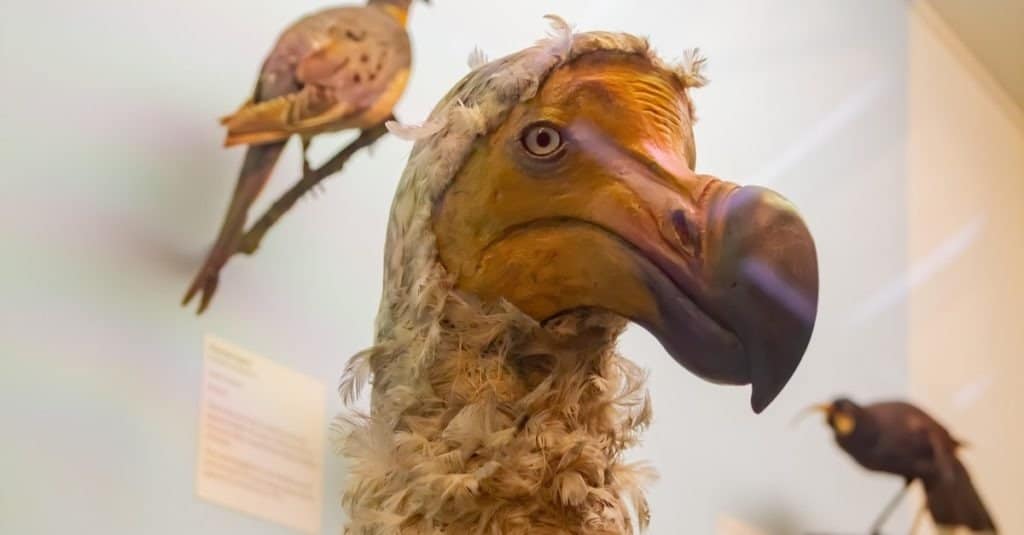
Dodos lived on the island of Mauritius — a small island off the coast of Madagascar in the Indian Ocean.
©Kit Leong/Shutterstock.com
Can you really have a list of cute extinct animals without including the dodo? The dodo was a flightless bird that went extinct relatively recently in 1690. With such a recent extinction time, humans have seen and documented these birds while they were still alive. They lived on the island of Mauritius, a small island off the coast of Madagascar in the Indian Ocean. The dodo ultimately went extinct because of human activity, primarily harvesting the dodo for food, and competition with introduced species from travelers onto the island.
2. Sea Mink
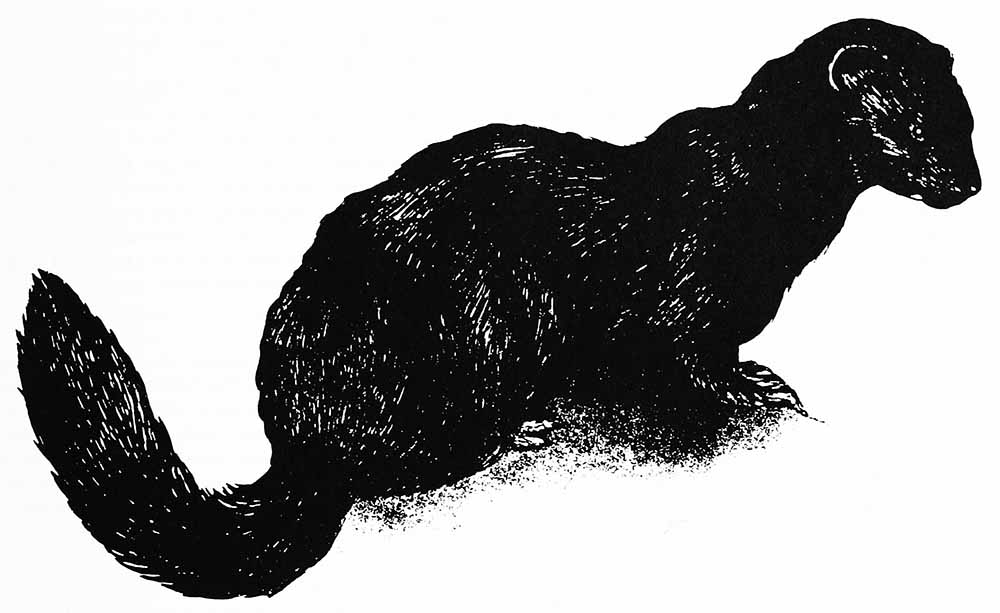
Sea minks had weasel-like bodies with downy fur and were extremely intelligent.
©Internet Archive Book Images, no known copyright restrictions (public domain) – License
The sea mink is, without a doubt, quite cute. Sea minks have gone extinct rather recently, with most estimations placing the last dying out sometime between 1860-1920. Like its cousin, the American mink, sea minks had weasel-like bodies with downy fur and were extremely intelligent. They lived along the coastal region of the Gulf of Maine but were ultimately hunted to extinction as a result of the fur trade in the region. When compared to other related minks, the sea mink was larger and more marine-oriented, with reddish fur and intelligent eyes.
3. Toolache Wallaby

Toolache wallabies stood on two legs and had small forearms.
© John Gould / public domain – License
The toolache wallaby is our first entry from Australia today, but it won’t be our last. For the toolache wallaby, picture a smaller and multi-colored kangaroo of around 2-3 feet in length. Toolache wallabies stood on two legs and had small forearms they occasionally used while foraging. Overall, they were quite cute, especially when you consider how small and compact they were. These animals lived in the southeastern corner of Australia all the way to the western portion of Victoria.
Toolache wallabies had been living for millions of years in relative stability, but only lasted 85 years after colonials landed on Australia’s shores. A conservation effort began in the 1920s, but during a mission to capture and breed them, 10 of the 14 remaining wild individuals were killed. The last wild toolache wallaby likely died around 1924, although some sightings did claim to place them up to the 1970s.
4. Quagga
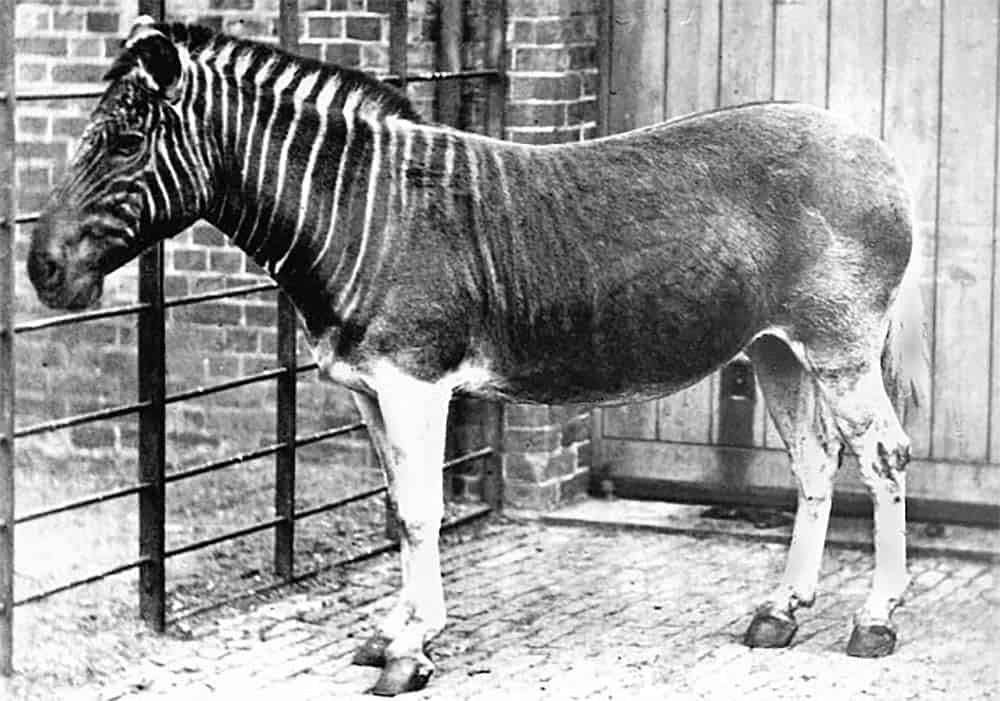
Quaggas were known to be more docile than regular zebras.
©Frederick York (d. 1903) / public domain – License
The quagga isn’t traditionally small or cute, but it does have a certain cuteness in certain depictions. The quagga was a subspecies of zebra that lived across South Africa, although it was hunted to total extinction at the end of the 19th century (the late 1800s).
Quaggas looked somewhat similar to a zebra, but they had a much lighter coloration that bordered on blonde, and their stripes only went from the head to the midsection. They were known to be more docile than regular zebras and gathered in herds of between 30-50 individuals. The last known wild quagga died in 1878, and the last captive specimens died in 1883 in Amsterdam.
5. Bramble Cay Melomys
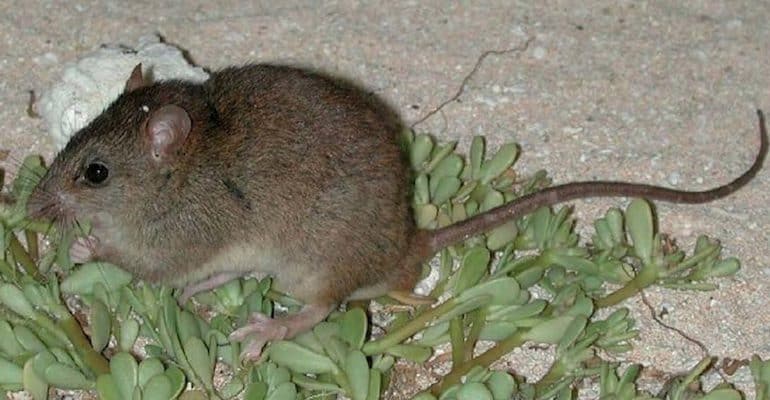
The Bramble Cay melomys is a recently extinct species of rodent in the family Muridae.
©State of Queensland // CC 3.0 – License
The Bramble Cay melomys was, without a doubt, a quite cute extinct animal. These small creatures were a species of rodent that lived in the wet habitats of northern Australia. The entire population lived in a small five-acre region known as Bramble Cay, which is a coral cay at the northern tip of the Great Barrier Reef. They were the only mammal endemic to the reef and are generally recognized as the first recorded mammal extinction due to human-caused climate change. The small island they lived on had been covered in water multiple times over the past few years, which is likely the cause of their extinction. The last wild individuals died in May 2015, and they were officially declared extinct in 2019.
6. Rusty Numbat
Besides the absolutely adorable name, the rusty numbat was also physically cute. There are two species of numbat, of which only one remains and is generally just referred to as a “numbat.” The rusty numbat was a small, squirrel-like marsupial with a bushy tail, white stripes, and a small head. Both species of numbat were nearly wiped out after colonials deliberately released red foxes into the Australian ecosystem, restricting the remaining population to under 1,000 individuals in tiny isolated areas. Unfortunately, the rusty numbat wasn’t able to survive this unnatural event and was eventually declared extinct in the 1960s after continued pressure eventually wiped the animals out. Still, the remaining species are recovering after extensive governmental programs and conservation efforts.
7. Lesser Bilby

The lesser bilby was a small marsupial that looked like a combination of a mouse, kangaroo, and bunny.
©Oldfield Thomas / public domain – License
The lesser bilby is another cute animal that has since gone extinct from its endemic location in Australia. The lesser bilby was a small marsupial that looked like a combination of a mouse, kangaroo, and bunny. It has a mouselike tail and head, kangaroo legs, and large ears like a rabbit. Cute, right?
Lesser bilbies historically occupied a range across central Australia, although details are scarce since they were only captured six times in modern history. Still, it’s well known they liked sandy regions in the northern territory of Australia. The last time the lesser bilby was seen was when bones were found in an eagle’s nest in 1967, although the bones were believed to have been at least 15 years old. They likely went extinct in the 1960s when the domestic cat and fox populations destroyed the small wildlife across the Australian continent.
8. Steller’s Sea Cow
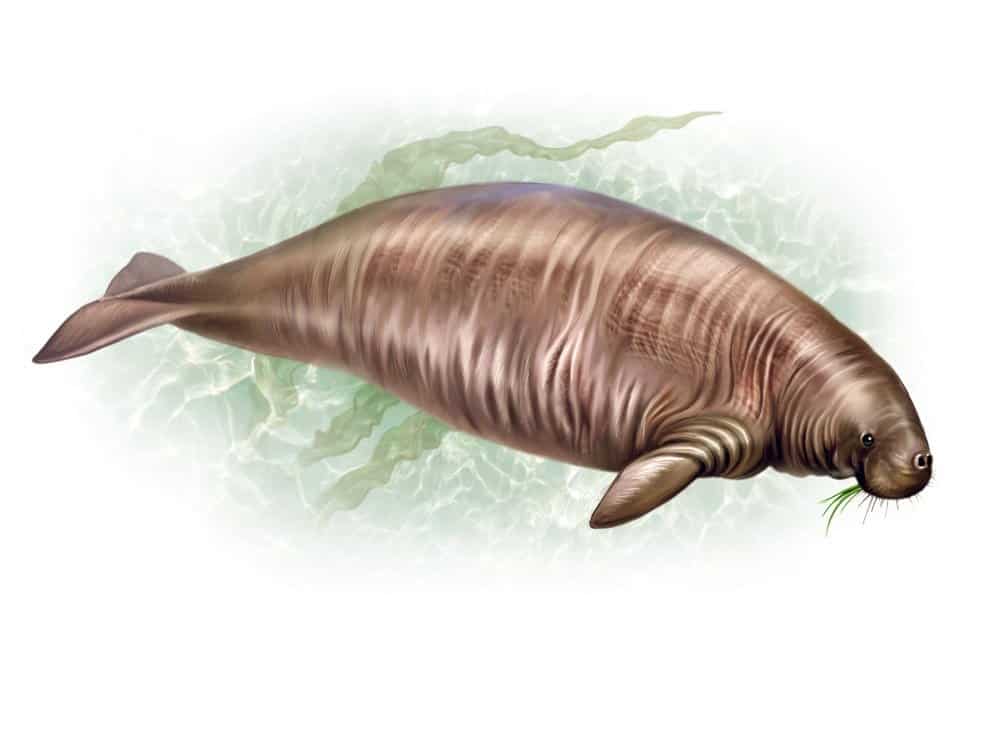
Steller’s sea cows lived along the coast of the Commander Islands in the Bering Sea.
©Liliya Butenko/Shutterstock.com
Manatees aren’t what some would traditionally call “cute,” but we think they are in their own special way. One of the most famous of all extinctions involves a manatee relative, the Steller’s sea cow. These slow-moving sirenians lived along the coast of the Commander Islands in the Bering Sea, which is between Alaska and Russia. Since they moved slowly and were non-aggressive, they were hunting to extinction for their meat and hides within 27 years of its discovery. Incredibly, these animals reached over 30 feet long and weighed up to 11 tons. They went extinct in 1768 after being discovered by Europeans only 27 years prior.
9. Splendid Poison Frog

Splendid poison frogs lived in humid lowlands and wet forests in Panama.
©Agustin Herrera C/Shutterstock.com
For the first amphibian on our list, meet the splendid poison frog! Splendid poison frogs were bright red, although the preserved specimens that exist today are mostly grey due to the preservation process. They were small frogs, measuring only 1.2 inches at max. These little frogs lived in humid lowlands and wet forests in Panama, mostly near the western Cordillera de Talamanca Central next to Costa Rica. They were officially declared extinct after a disease known as chytridiomycosis swept through the population.
10. Baiji Dolphin
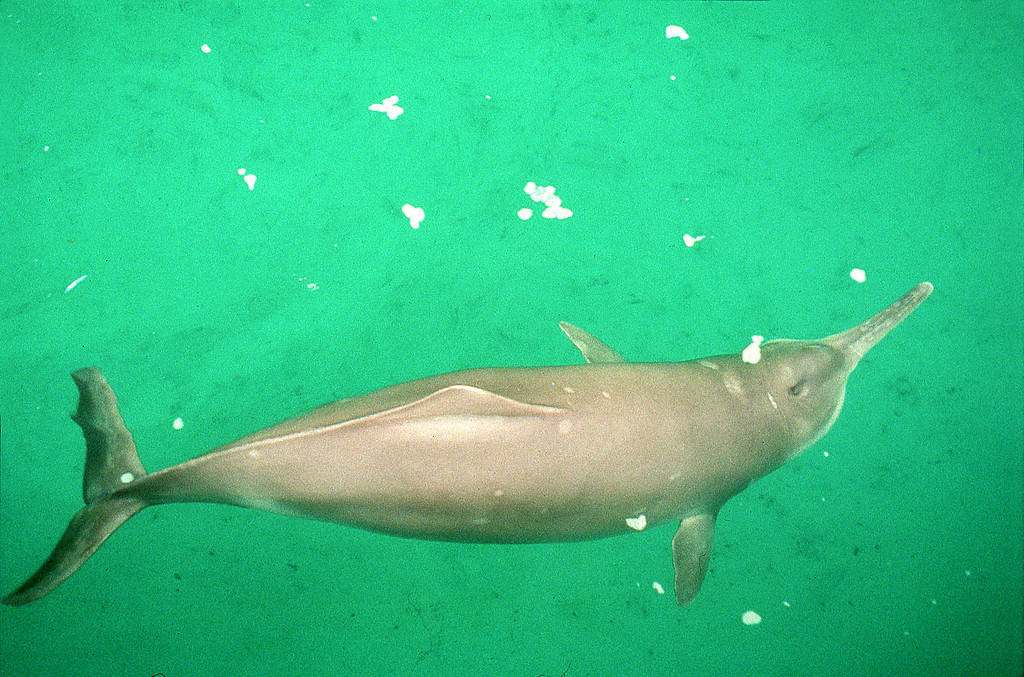
The baiji dolphin is the first documented species of dolphin to have been pushed to extinction by humans.
©iStock.com/EarthViews Productions
The baiji dolphin made it on our list, although the verdict isn’t exactly certain as to whether they are officially extinct. The baiji is a species of freshwater dolphin that has a natural range along the Yangtze River in China. In the 1950s, the baiji population was listed as around 6,000 but rapidly began to decline in the years after. By 1997, only 13 were found in the wild, with the most recent sighting being in 2004, with only shaky sightings remaining since, prompting most to classify it as extinct. Nearly 12% of the world’s population lives within the catchment area of the Yangtze River, causing pollution, hunting, and habitat destruction to be the primary causes of the dolphin’s decline. The baiji dolphin is the first documented species of dolphin to have been pushed to extinction by humans.
11. Carolina Parakeet
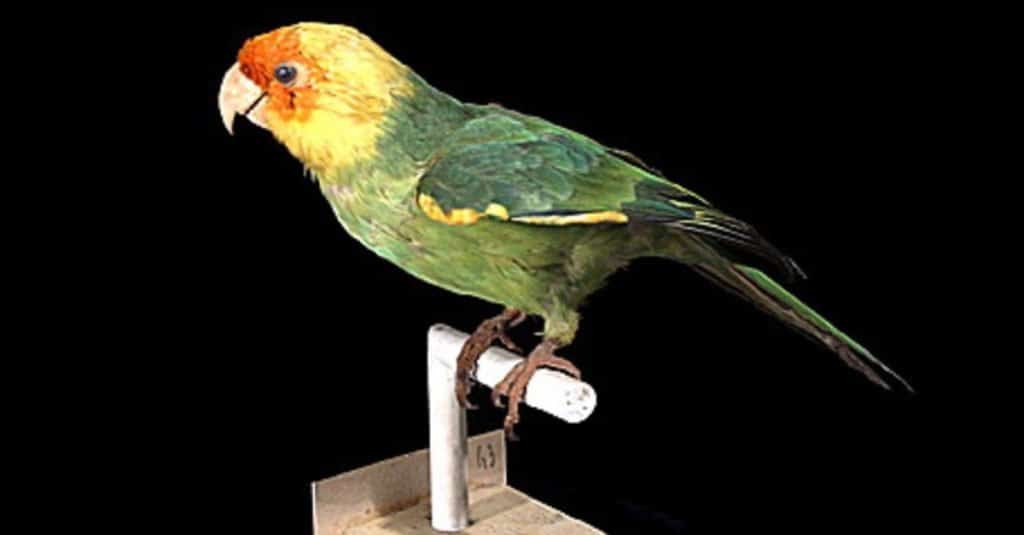
Carolina parakeets officially went extinct in 1918 when the last living zoo specimen died.
©Naturalis Biodiversity Center / CC BY-SA 3.0 – License
The Carolina parakeet, otherwise known as the Carolina conure, was a small tropical parrot with a green body and a bright orange or yellow head. Incredibly, these parrots were the only parrot species within its range, and their range is quite remarkable. The Carolina parakeet‘s range extended from southern New York to Wisconsin and Colorado, and south to the Gulf of Mexico. Another interesting tidbit, these parrots were probably poisonous due to their diet. Cats would often die from killing and trying to eat them! They officially went extinct in 1918 when the last living zoo specimen, Incas, died. The cause of extinction is multifaceted and not wholly known, but probably some combination of mass slaughter (hunting), habitat destruction, and potentially a vicious poultry disease.
12. Ichthyostega
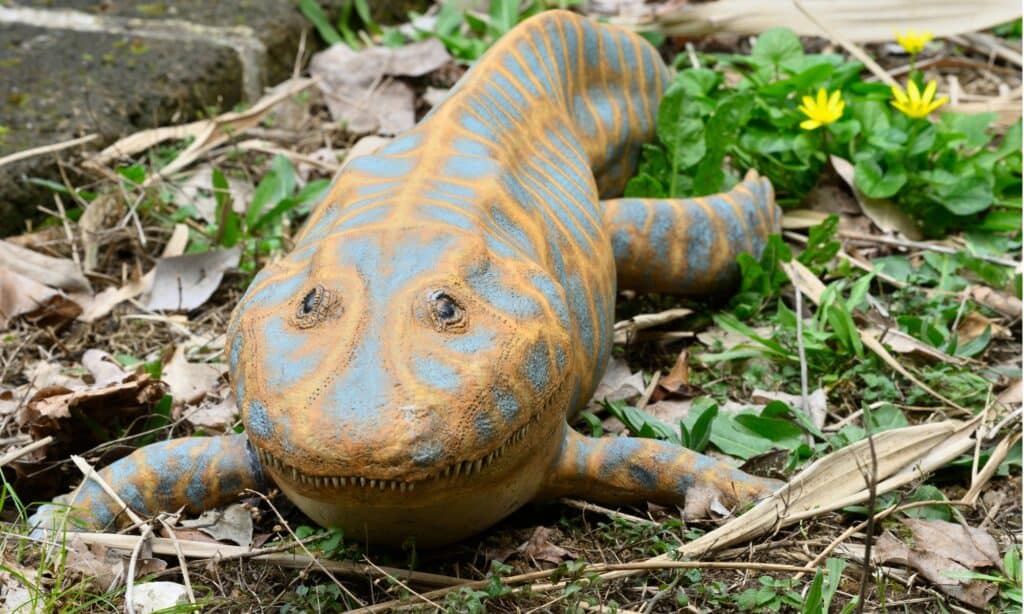
Ichthyostega is among the earliest four-legged vertebrates.
©iStock.com/AlessandroZocc
Ichthyostega is probably the strangest-looking animal on our list, but we can’t help but find the modern depictions of this medium-sized vertebrate incredibly cute and silly. These tetrapodomorphs are among the earliest four-legged vertebrates in the world and were some of the first to use their limbs to bear weight on land. These animals lived between 360-365 million years ago, making them the oldest cute extinct animal on our list so far!
13. Nuralagus

Nuralagus didn’t have the mobility that modern rabbits or hares have today.
©NobuTamura email:[email protected] palaeocritti / CC BY-SA 3.0 – License
Although the name Nuralagus is hard to pronounce, it isn’t hard to love! These animals are generally known as the largest lagomorphs to ever live, which essentially translates to the largest rabbits to ever live. Nuralagus weighed up to 26 pounds and stood around three feet tall! They didn’t have the mobility that modern rabbits or hares have today, but they are cute and a bit chunky in the best way. Nuralagus lived during the Pliocene epoch, roughly 2.5-5 million years ago.
14. Glyptodon

Glyptodon is a genus of large armadillos.
©YuRi Photolife/Shutterstock.com
Glyptodon is a genus of large armadillos; need we say more? They lived around 2.5 million years ago and lived across modern-day Argentina, Uruguay, Paraguay, Bolivia, Peru, Brazil, and Colombia. Incredibly, they only went extinct 11,000 years ago, showing just how hardy they were. Glyptodon had a huge domed “shell” made up of osteoderms (thickened skin and bony plates) and a head with a bony plate, although it couldn’t technically roll its head into its body like a modern armadillo.
15. Desert Bandicoot
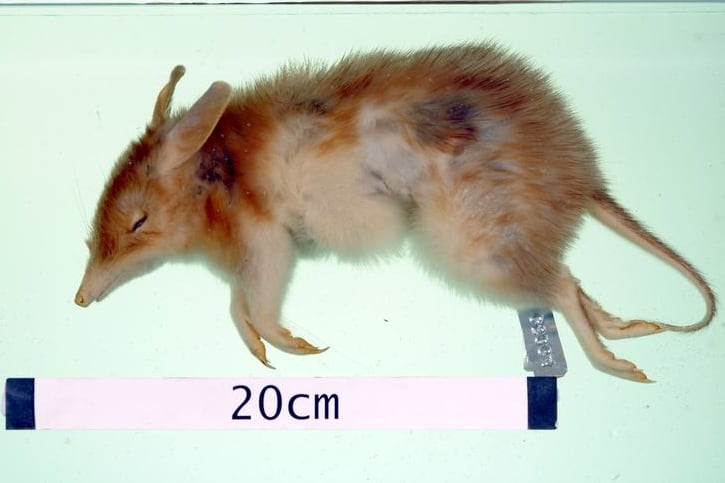
The desert
bandicoot
was a member of a larger group of bandicoots, many of which still exist today.
©David Staples / CC BY 4.0 – License
The desert bandicoot and its wonderful name are equally cute, albeit extinct. The desert bandicoot was a member of a larger group of bandicoots, many of which still exist today. Bandicoots are marsupials that live throughout Australia and New Guinea, of which the desert bandicoot was once a member. They were first documented by Europeans in 1897, with the last known specimen being found in 1943. Their historical range extended across sandy desert regions in central Australia. They likely went extinct after the burning habits of the aboriginal people changed after they were removed from the central Australian deserts, further worsened by the introduction of the European red fox.
Summary Of
| Rank | Animal | Date Lived/Went Extinct |
|---|---|---|
| 1 | The Dodo | Went extinct 1690 |
| 2 | Sea Mink | Went extinct between 1860-1920 |
| 3 | Toolache Wallaby | Declared extinct 1924, some sightings claimed in the 1970s |
| 4 | Quagga | Went extinct late 1800s |
| 5 | Bramble Cay Melomys | Went extinct 2019 |
| 6 | Rusty Numbat | Went extinct 1960s |
| 7 | Lesser Bilby | Went extinct 1960s |
| 8 | Steller’s Sea Cow | Went extinct 1768 |
| 9 | Splendid Poison Frog | Last seen in 1992 |
| 10 | Baiji Dolphin | Declared extinct 2006 |
| 11 | Carolina Parakeet | Went extinct 1918 |
| 12 | Ichthyostega | Lived 360 million-365 million years ago |
| 13 | Nuralagus | Lived 2.5 million-5 million yrs ago |
| 14 | Glyptodon | Went extinct 11,000 years ago |
| 15 | Desert Bandicoot | Went extinct in 1943 |
The photo featured at the top of this post is © Daniel Eskridge/Shutterstock.com
Thank you for reading! Have some feedback for us? Contact the AZ Animals editorial team.







